Dec 12, 2013 | collage, interviews
Gabriel Folli is a young French artist, working in nearly every medium to interpret his memories and the world around him. He’s studied at the University of Amiens, near Paris since 2009 and has exhibited in Amiens, Abbeville and Bourges, France this year.
His collaged works are my favorite — layer upon layer of photographs and color that turn memories into dreams — or nightmares, depending on what frightens you. But his portfolio finds balance in representational paintings and drawings of landscapes. They hold shadowed horizons taken from photographs, and the sheets of skyline can be rearranged and randomized to create places that don’t exist.
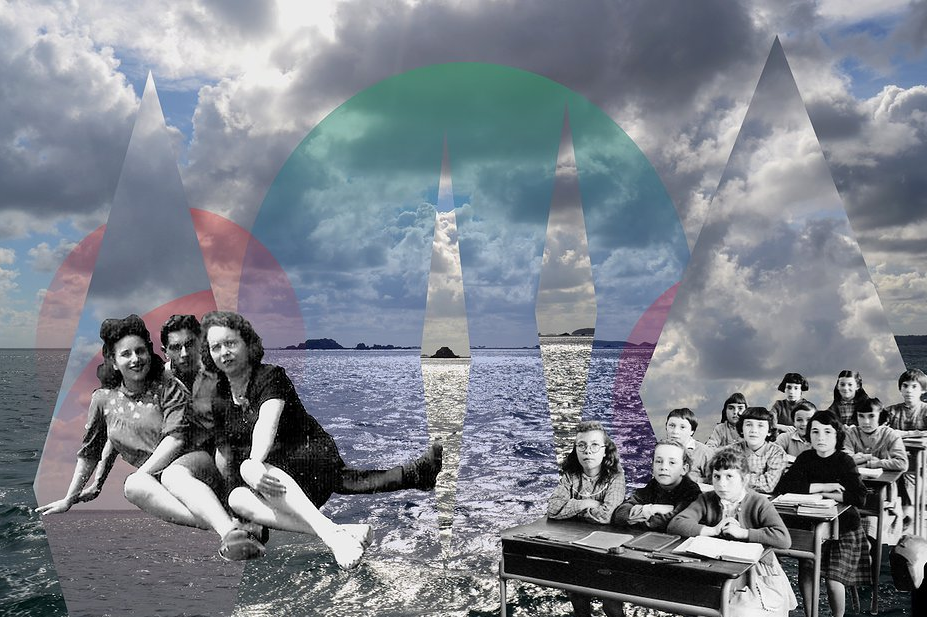
When did you first know you wanted to be an artist? What’s the first artwork you can remember ever creating?
I began to draw comic strips when I was 13 or 14 years old. I wanted to make it my job. During the high school I created many drawings and installations… Concerning the works I make today, the first work which had an influence on the others was a video called Open Door, created in 2012.
Where do you find the images for your collages? How do you piece them together?
Initially, I take photos of landscapes which make up the background of the collage. Then, the characters are members of my family, my friends…I find theses photos in my family’s archives, most of them are old photos that come from the house of my grandparents. I give them a second life.
For the construction of collages, I look for people who can correspond to the landscape, or not, and I play with the hot colors. In my work in general, there is a strong contrast between warm colors, light and the black of darkness. I want to create idealized and fantasized situations in my collages.
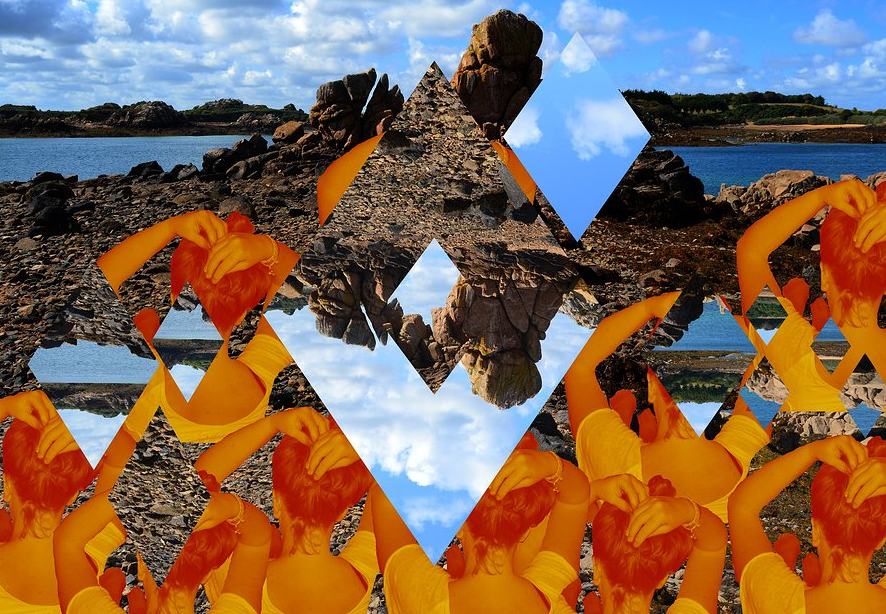
Do you create your drawings from photographs? What about landscapes inspire you to depict them in so many different ways?
Yeah, my drawings are created from photographs. Photography (or video) is often the basis of my work. I use photos to create drawings, paintings, collages…
The photography is not really the purpose but a way. Every drawing corresponds to a memory, and all of theses drawings create a life, my life, in which the memories are mixed and modified with time. Drawings are put on a same horizon line, in a random choice, and form a unique landscape.
Who are a few of your art idols, and do you think they played a role in the formation of your own work?
A lot of artists are influence my work, it’s certain! I discover most of these artists on the Internet or in books, among whom many are not very well-known. I like the work of Monika Traikov, Fabienne Rivory, Sergey Larenkov, Lorna Simpson or Alexander Schellow, one of my favorite artists. Each of them has a different approach, and in my work, I try to find new techniques to realize my memories, and at the same time, destroy them.
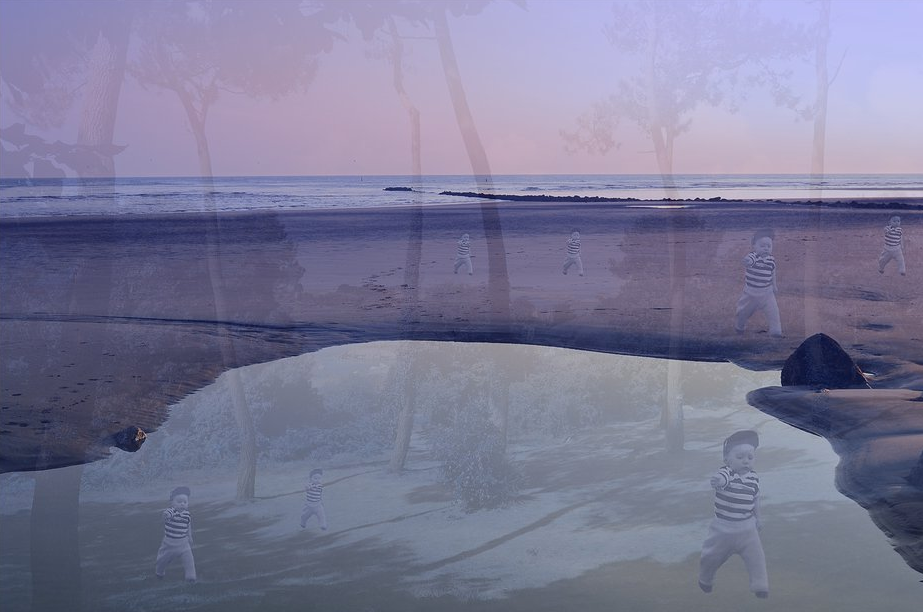
Which places most inspire you to create your landscape works?
I like the nature more than the city. A lot of my photographs are taken in the nature, in front of the sea or forest. I am interested by the night too. The night brings me a lot of contemplation, silence, solitude. Besides, I often create during the night.
What’s one of your favorite quotes about art?
« Je composerai jusqu’à la décomposition. » Serge Gainsbourg
In English : “I shall compose until the decomposition”
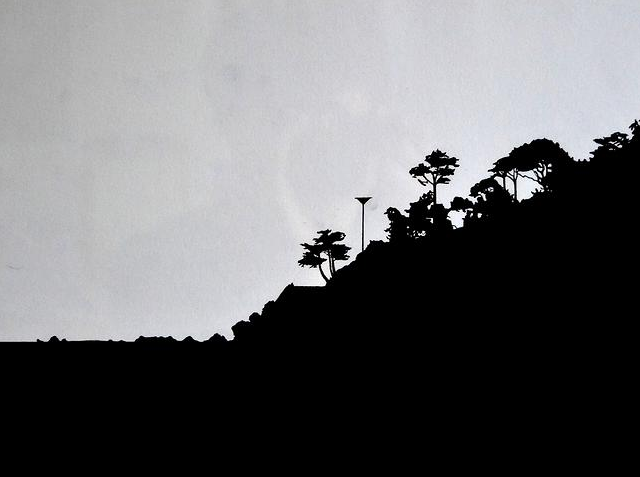
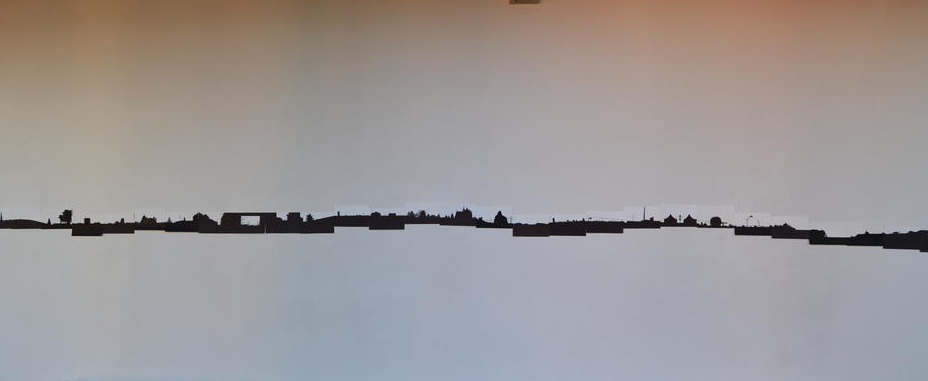
For more from Gabriel, check out his Twitter, Tumblr and website.
GD Star Rating
loading...
Apr 22, 2013 | features, Museum of Fine Arts: Boston, museums
My little sister came to visit me in Boston a couple of weeks ago, so I took her to museums and a Boston Symphony Orchestra performance that she enjoyed more than I did (she’s a pretty talented flautist, so it figures). Carrie’s turning sixteen on Friday (!!) and I was really interested in getting her take on art, so we went to the Museum of Fine Arts here in Boston on a pay-what-you-wish Wednesday night and had the best time.
She’s only fifteen but she’s pretty brilliant. Sometimes she’d mention a comment about a painting or sculpture I’d spent hours studying, and point out something I didn’t even think to consider. Because with art, what you know doesn’t matter as much as what you see, and how you view it through your own lens of experience.
Inspired by the new People’s Choice section, read on to meet Carrie and hear what she thinks about five masterpieces on view at the Museum of Fine Arts Boston:

Hi! My name is Carrie Davis. I’m currently a sophomore at Fairhope High School, and I just happen to be the little sister of the creator of the site you’re on right now. Music is my passion, but I recently went to the Museum of Fine Art with my sister so she’s putting me to work by writing about these lovely pieces of art. I also enjoy playing the flute, riding my horse, long walks on the beach, and bacon. HAVE A GREAT DAY, OKAY?
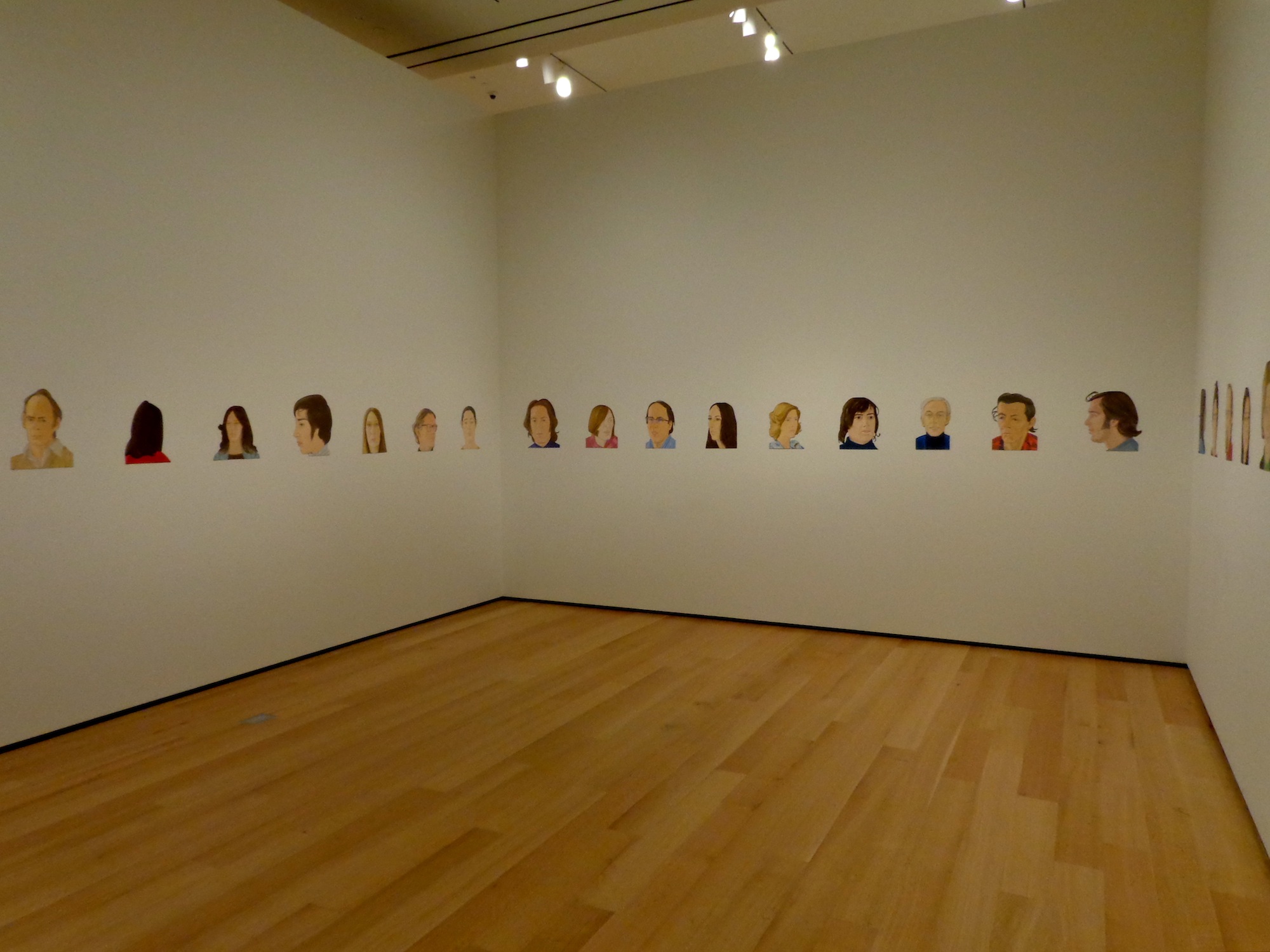
Alex Katz, “Rush,” 1971
Rush makes me curious as to who the inspirations are, or where they came from. I love the emotion in the faces, too. It’s very interesting how some of the faces are shown straight on, some show their profiles, and others only show the back side of their head.
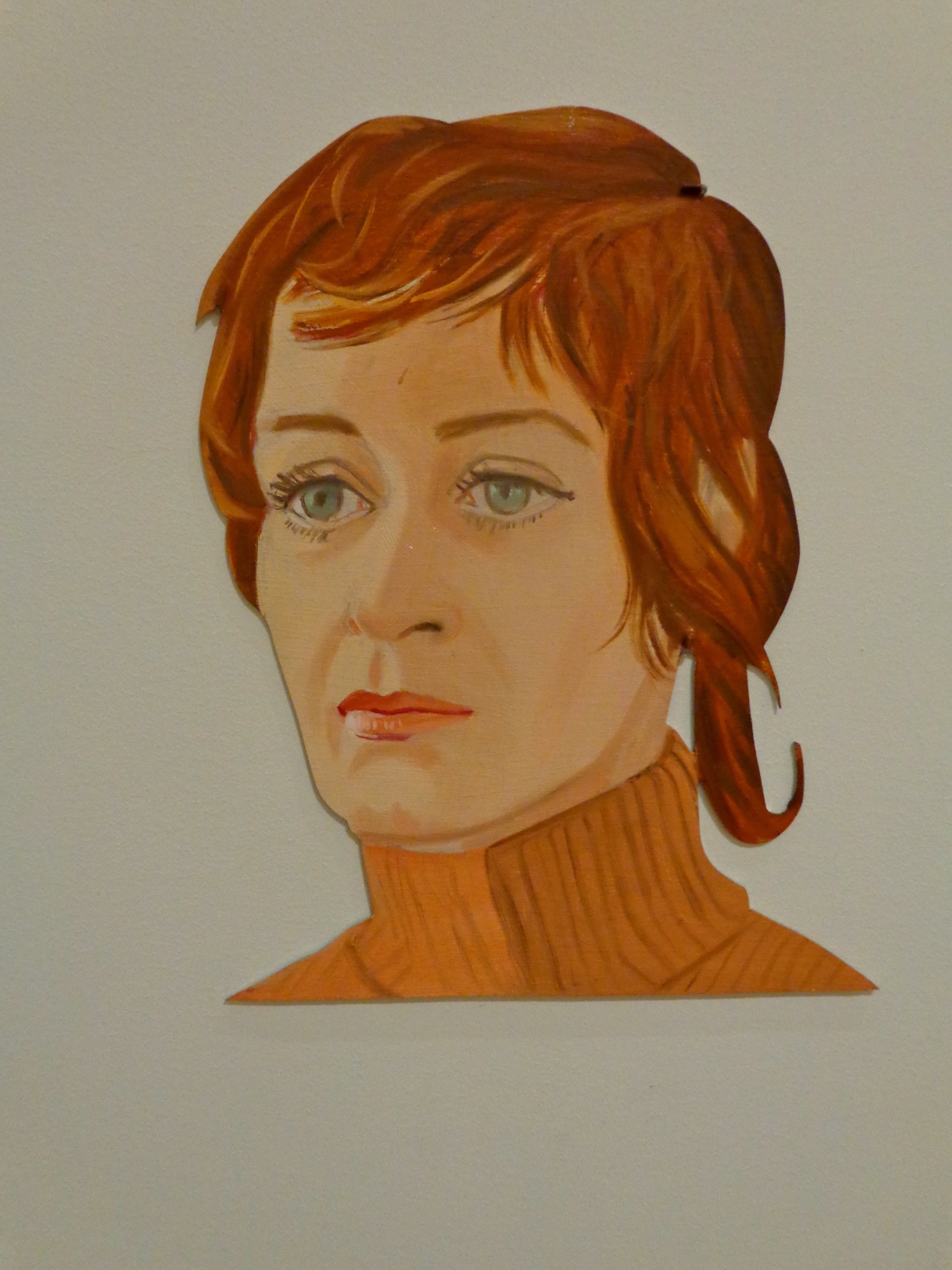
Detail, Alex Katz, “Rush,” 1971
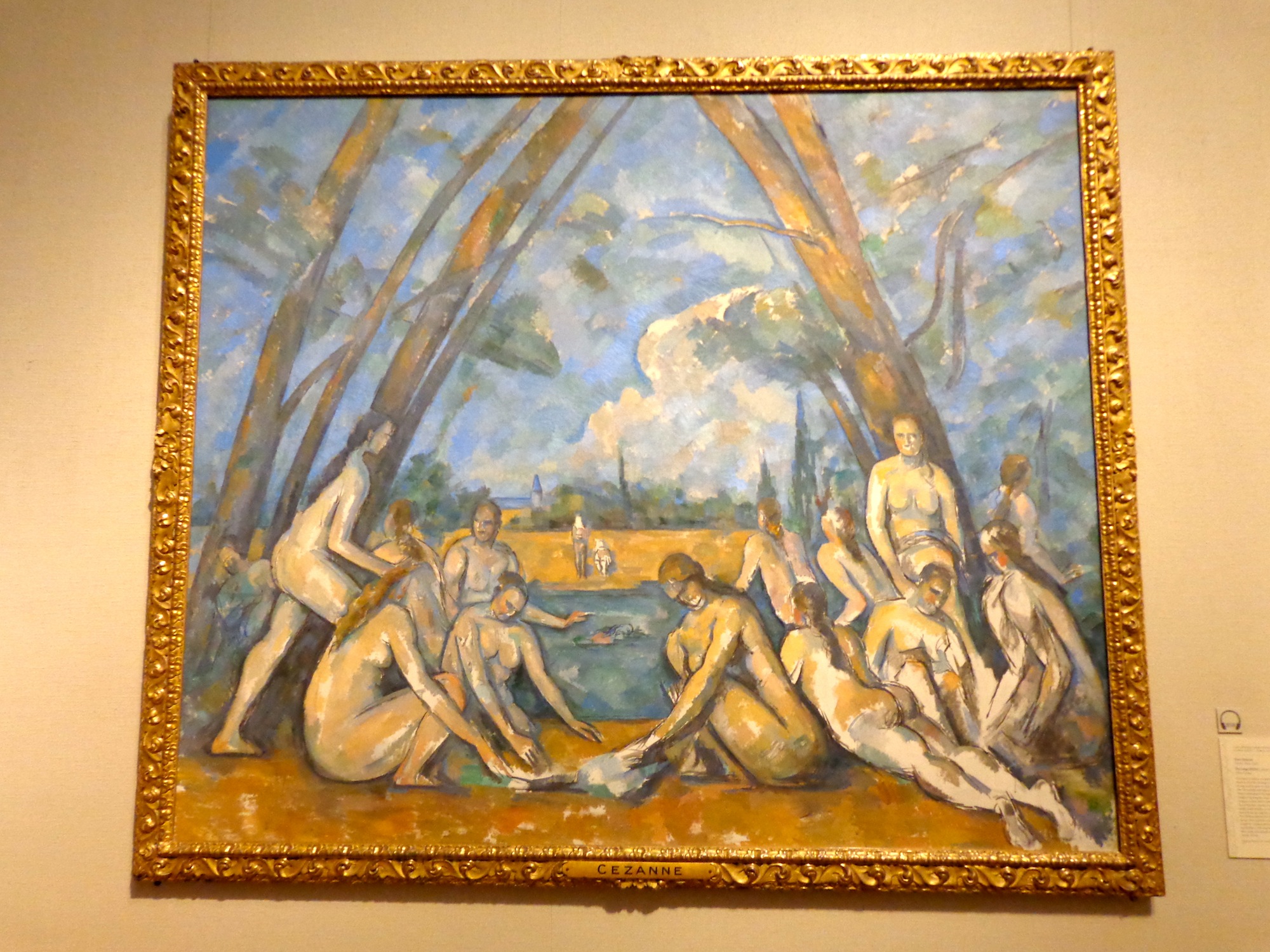
Paul Cezanne, “The Large Bathers,” 1879-1906
Paul Cézanne uses an almost watercolor looking technique in The Large Bathers to get a beautiful contrast of colors between the sky and the nature. The women in the painting appear to be doing the cliché deeds of women in the early 1900s when this artifact was created, which gives the viewer a glimpse back into time. The one thing I’m most curious about is the town in the background. It seems to be civilized, yet the people are nude. Could they be a different civilization of people, or possibly a single nudist colony? I’m in love with the way Cézanne makes you think and consider the possibilities of these lovely creatures.
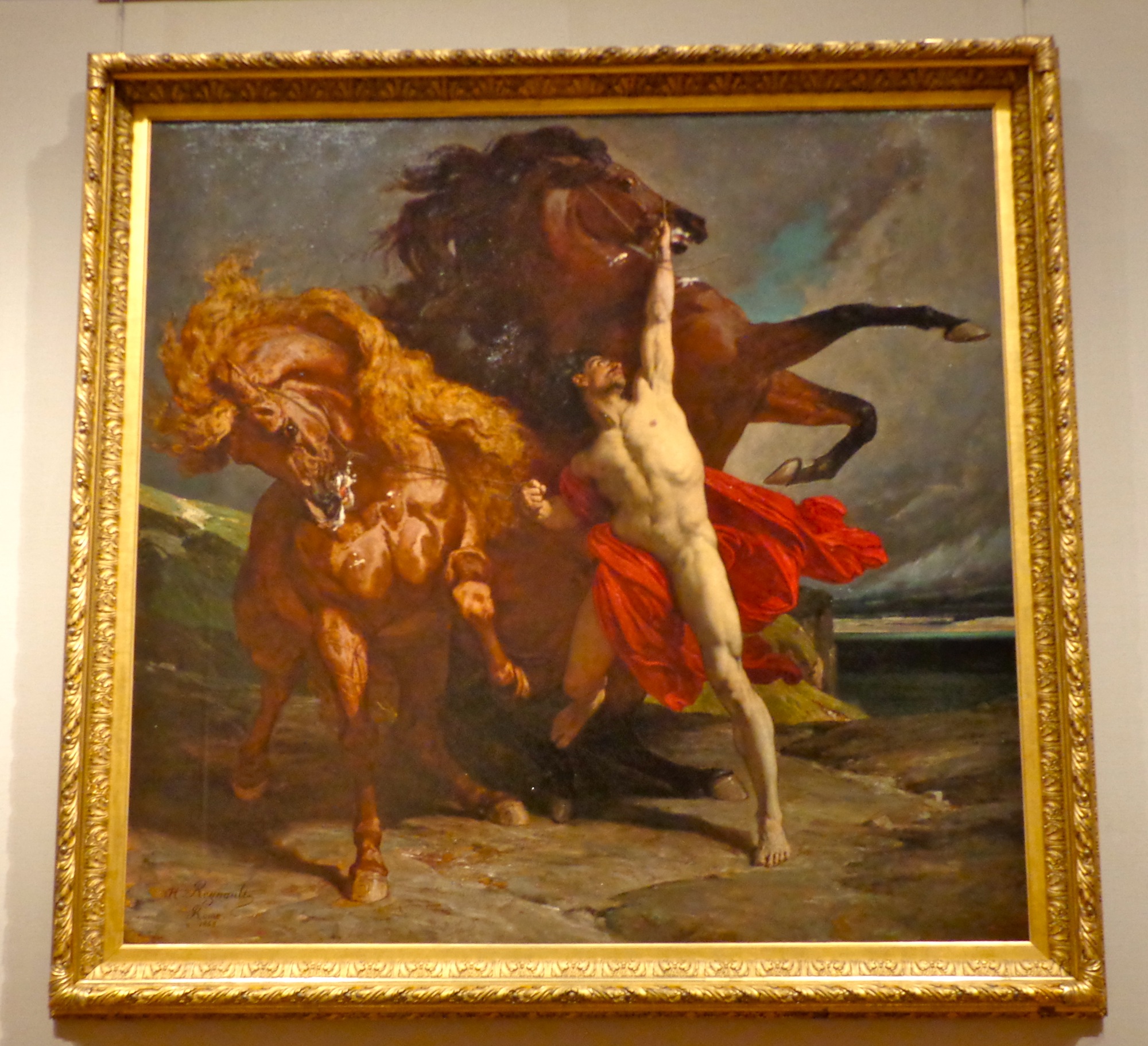
Alexandre-Georges-Henri Regnault, “Automedon with the Horses of Achilles,” 1868
The strength and fury of the horses in Automedon with the Horses of Achilles puts me in awe of how much bravery that man (Achilles?) must have. The foaming mouths of the horses as they rear up to the protagonist of the painting makes me astonished by the man’s power. This painting was at least eight feet tall, creating an entirely new feature that a computer screen lacks. The frame of the piece is very forceful. It looks like something that would be in a literary work by Homer. The raging horses, along with the raging ocean makes for an angry and terrifying mood.
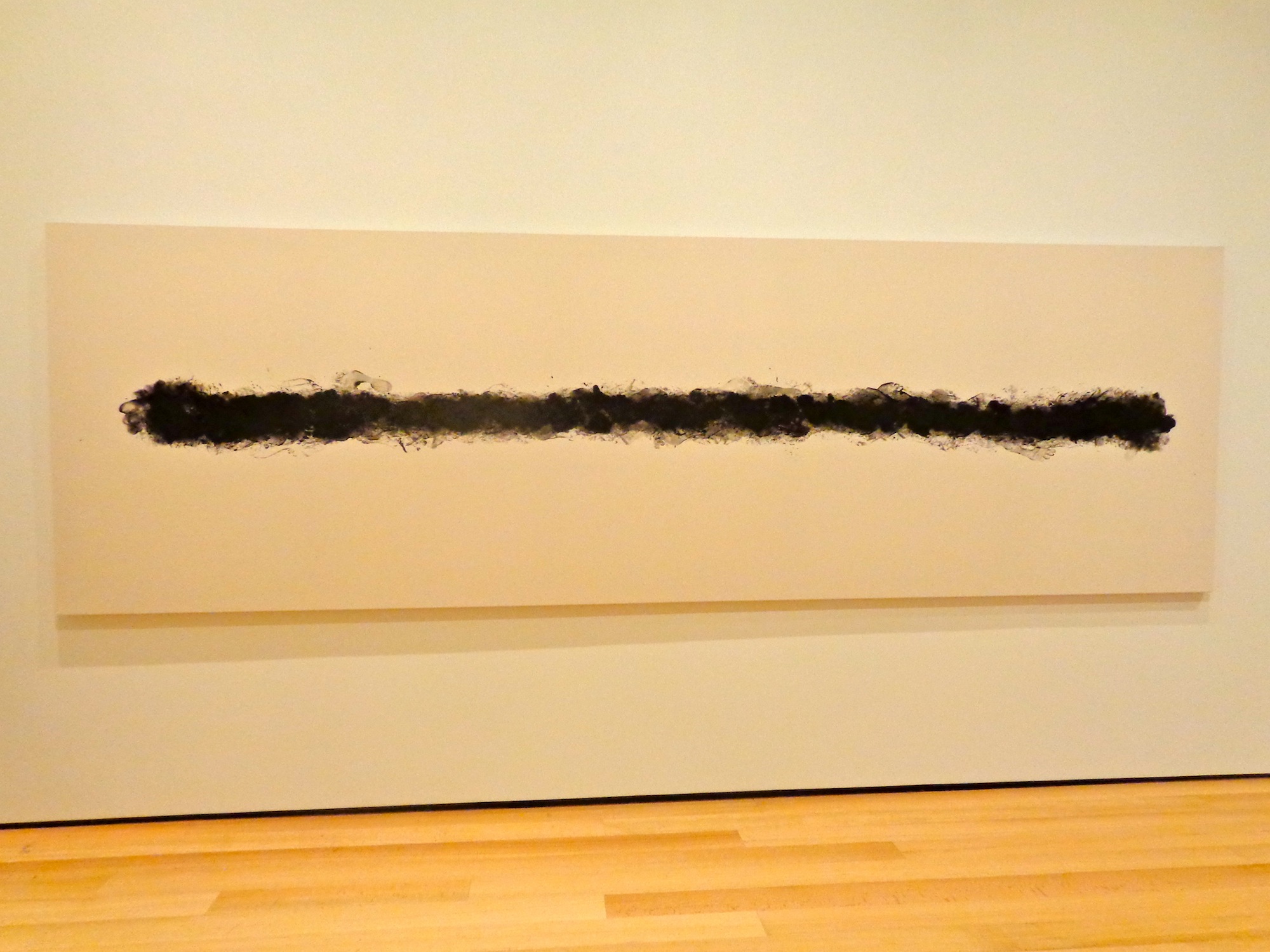
Annette Lemieux, “Pacing,” 1988
Pacing, by Annette Lemieux, is quite inspirational. It was created so simply, yet it’s so beautiful and interesting to look at. I love how most of the foot prints are very concealed, yet the ones on the outside are so detailed and noticeable.
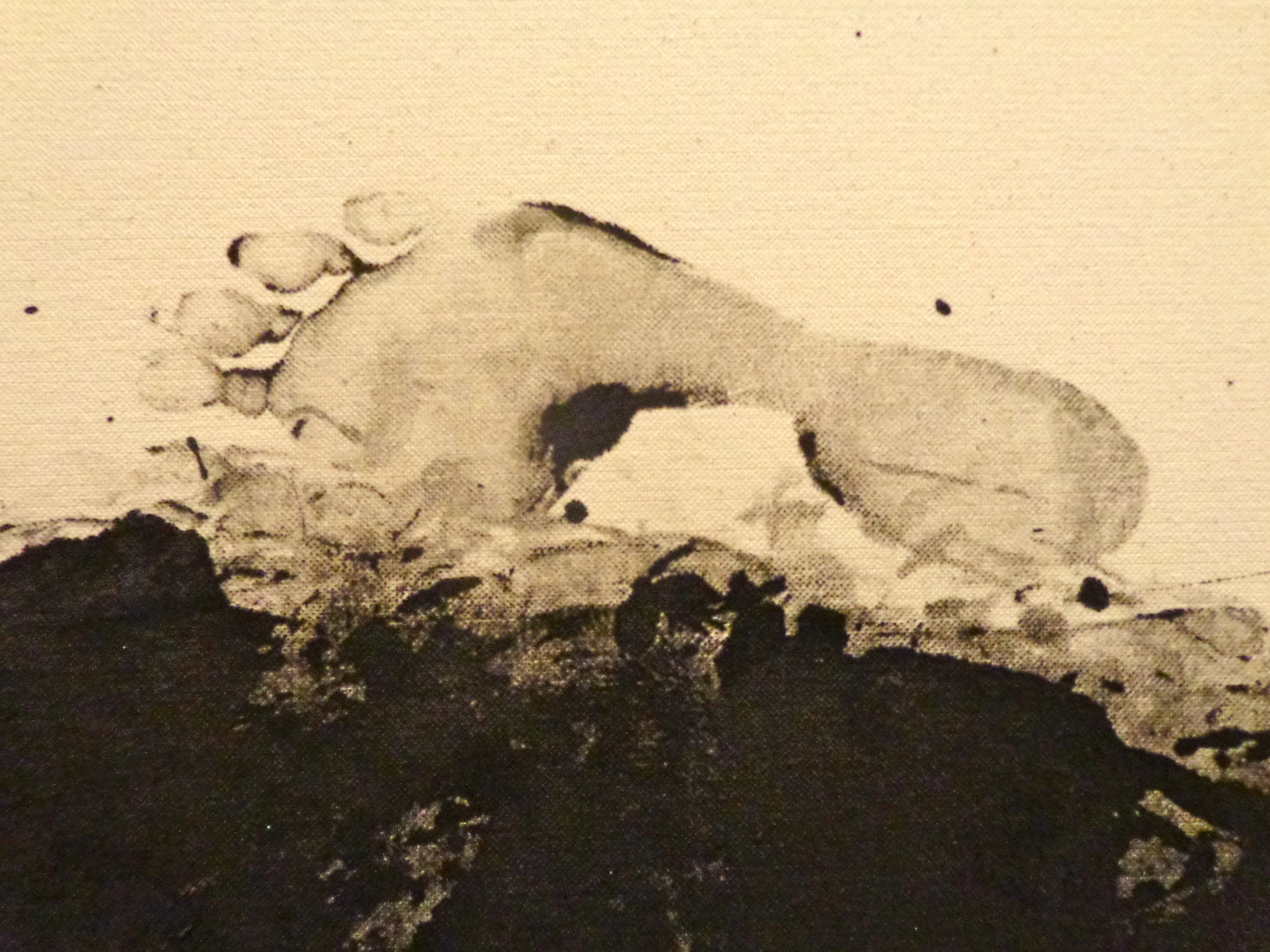
Detail, Annette Lemieux, “Pacing,” 1988
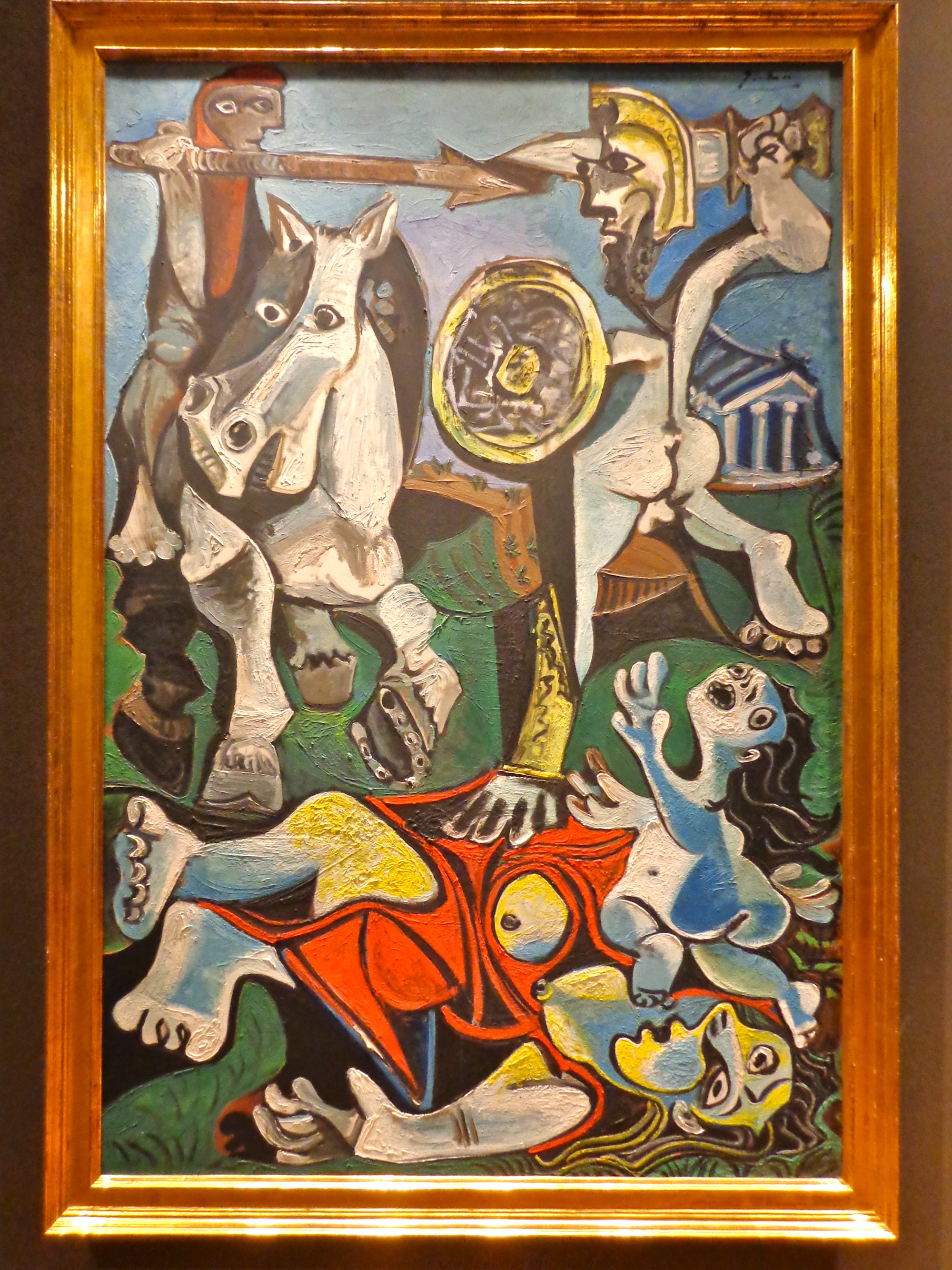
Pablo Picasso, “Rape of the Sabine Women,” 1963
In the Rape of the Sabine Women by Pablo Piccaso it makes me sad for the victims in the painting. The men want them so desperately, and are willing to hurt them in order to obtain that power. The poor child appears to be crying out for the men to cease, but they so crave the power and the sense of control that winning this brawl will give them.
For more from Carrie, you can follow her on Twitter, and be sure to wish her a happy birthday!
If you have your own impressions you’d like to share, use this form to join the People’s Choice Project and get your own post just like this one.
GD Star Rating
loading...
Mar 19, 2013 | art fairs, installation, painting
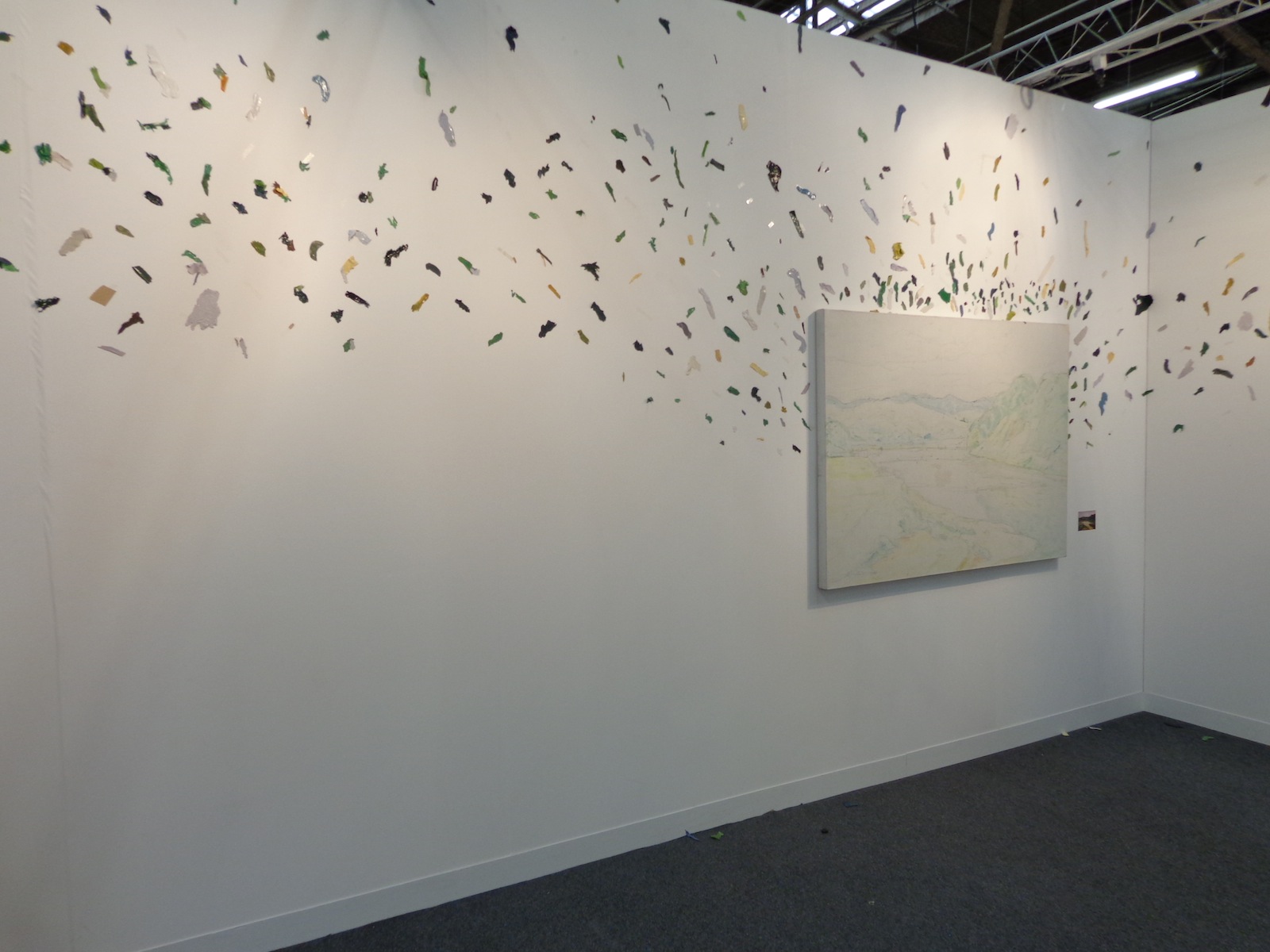
One large-scale canvas that was covered only in colored pencil underpainting took up an entire wall of Tang Contemporary’s booth at The Armory Show. The canvas was surrounded by flying flecks of color, the same colors that should be on the painting instead of around it. It was just a simple landscape scene, a valley surrounded by green hills that led the eye off into the distance, but spreading the paint everywhere keeps you inside the booth instead of letting you escape into the scene like typical paintings intend.
A scattered, abstract way of interpreting absence versus presence, the piece is titled “A painting-Landscape,” and was created by contemporary Chinese artist Wang Yuyang in 2010.
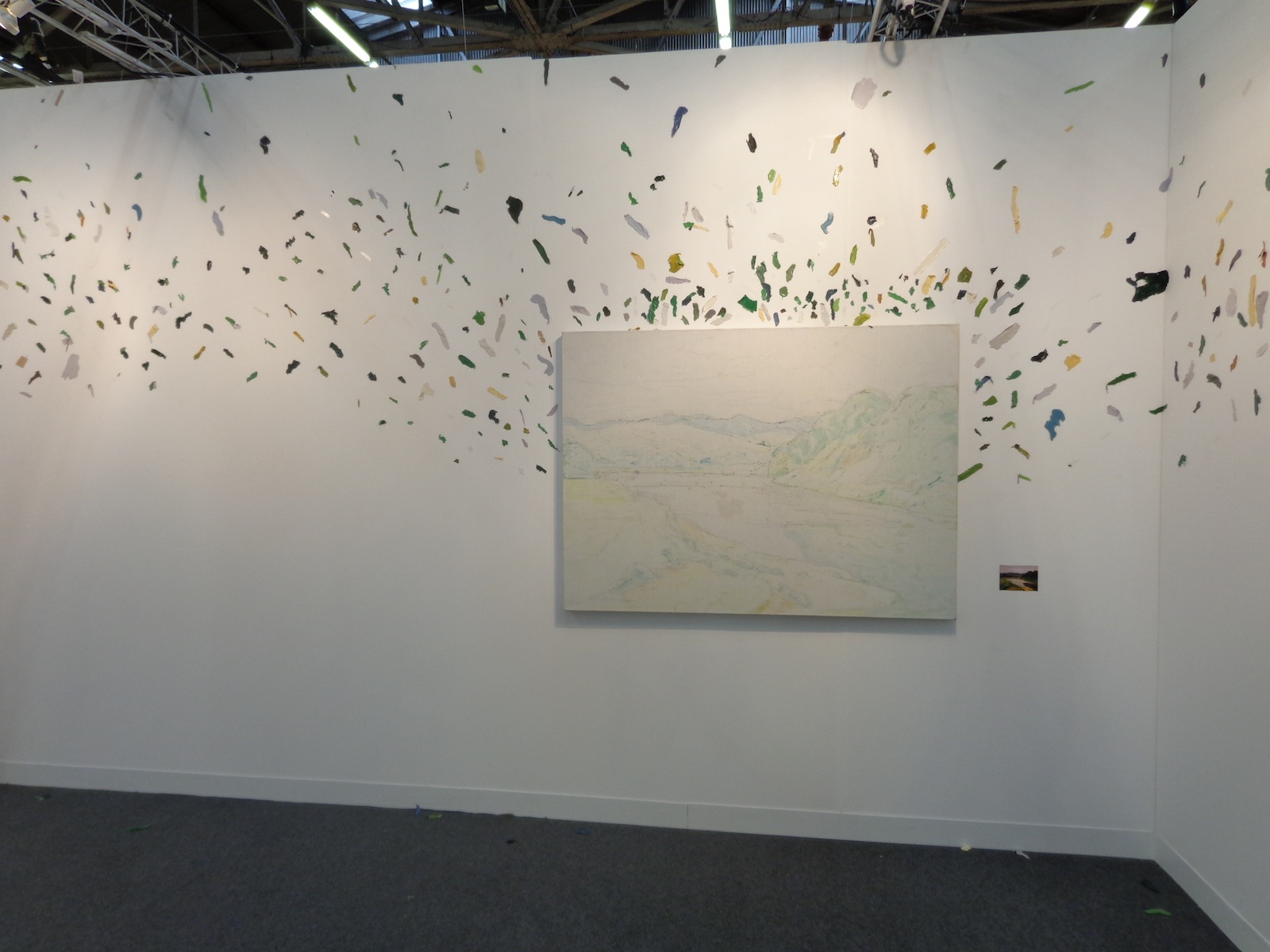
The piece mimics the Dr. Suessian notion of smacking color right off of the objects they belong to – you can almost see the artist finishing the landscape, hating it, and then KERSPLAT! He slams the canvas against the wall and paints flies everywhere. Of course, the canvas can’t be left completely empty since then there would be no correlation between the colors and what they used to represent, so the pale outlines and colors remain within the 85 x 55 cm rectangle.
There’s a connection between past and present, what used to be and what is now, all compared to what should be. Societal standards are overrated.
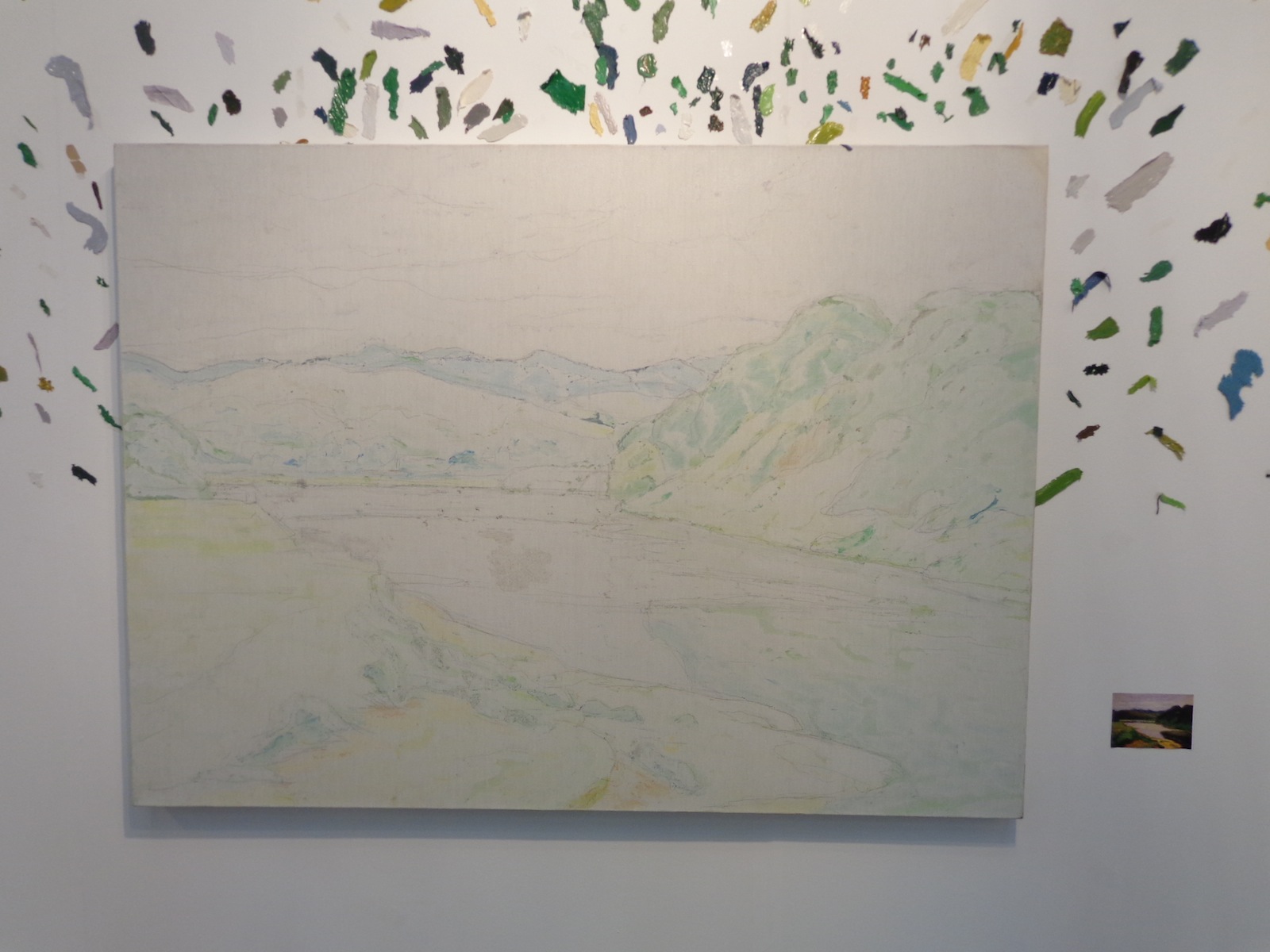
A miniature version of what the painting was intended to look like stood beside it, allowing viewers to compare color with the lack of it, although it’s hard to tell if this painting was ever really completed or just filled in with computers. Similar to one of those cube-scaling projects each art class has on its curriculum, the miniature version lets your eyes fill in the appropriate emptinesses of its older brother scene whose paint has flown the coop.
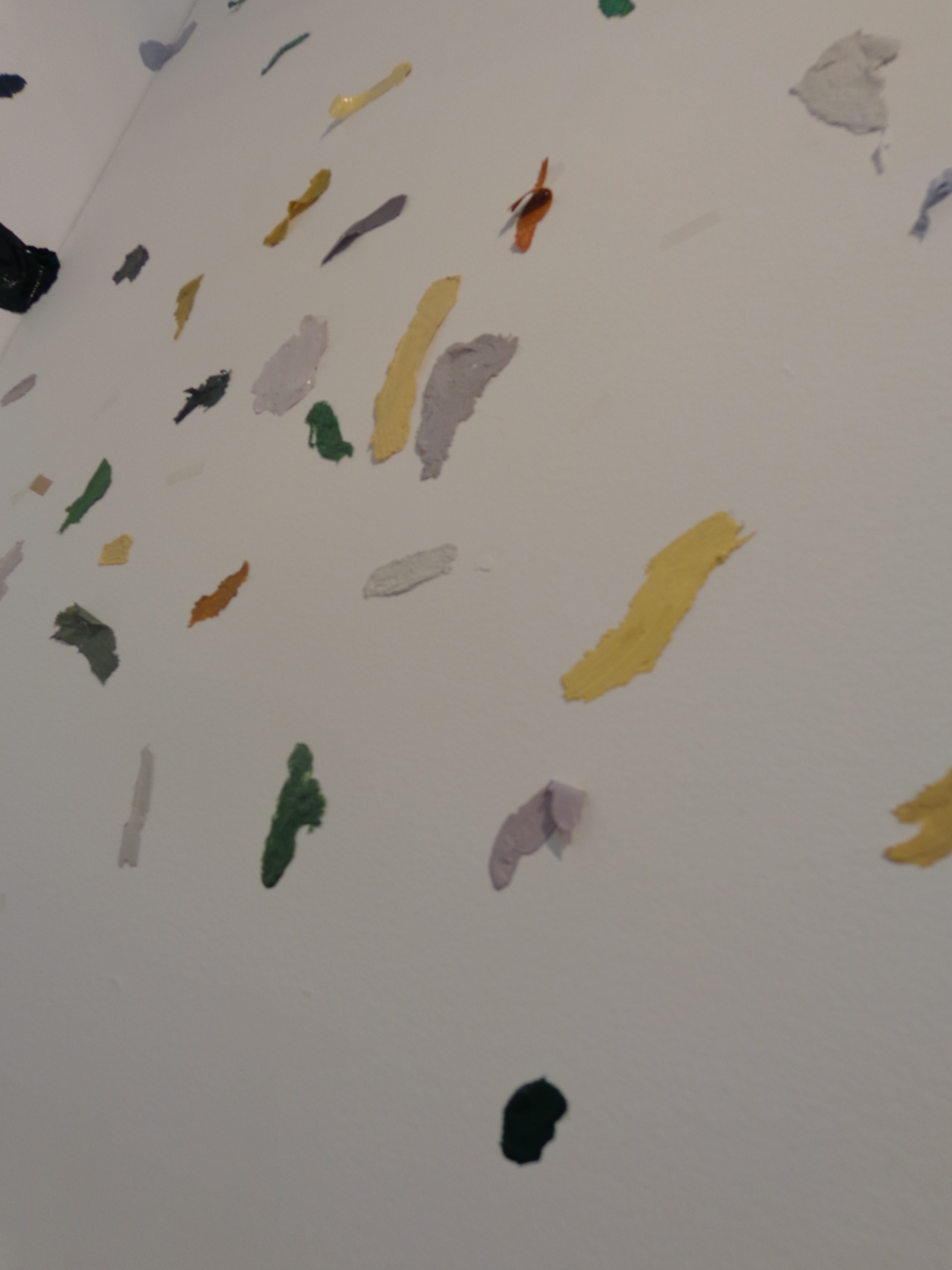
If you look close, you can see that all the little flecks of paint aren’t just oil and water, they have a plasticity to them that makes them more substantial than if they’d just been merged and flowed across a landscape scene. Each individual shade of green, yellow, gray, white, blue and black stands independently – defiantly almost, refusing to become part of the whole and wanting its own space on the wall to be noticed by passing viewers.
Tiny colored flecks even fall on the floor beneath the painting, bringing this contemporary art piece all the way to your feet.
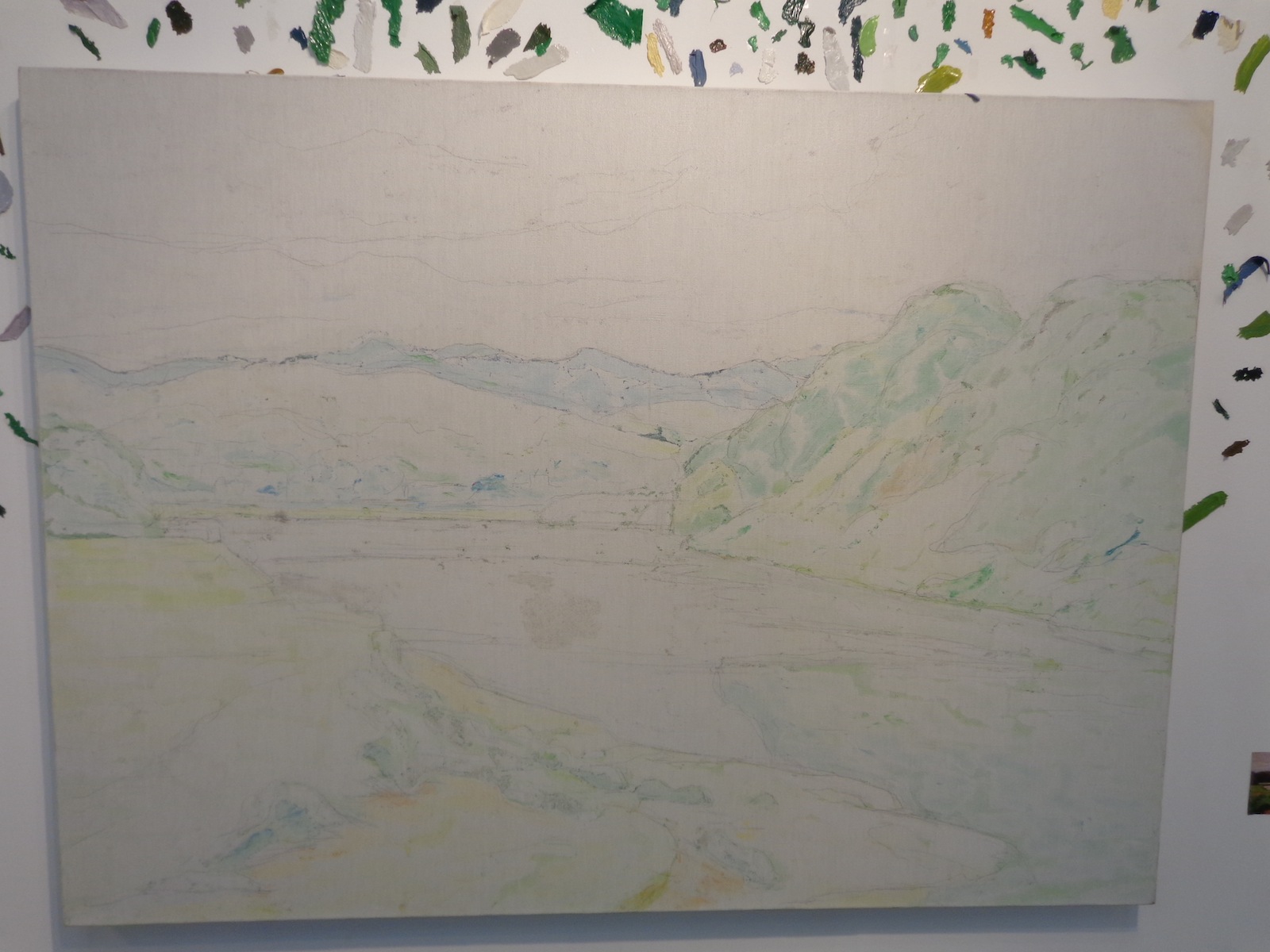
Wang Yuyang is a 34-year-old contemporary Chinese artist whose work deals with technology and our relationship to it, along with the aesthetics of brokenness and pilings of material waste.
“I like the traditional Chinese philosophy because it talks about the relationship between 1 and 0, on and off, black and white, something and nothing,” Yuyang explained, “My works explore this connection.” He is also particularly interested in exploring what he calls “the zero state” – an emptiness filled with nothing but silence and stillness.
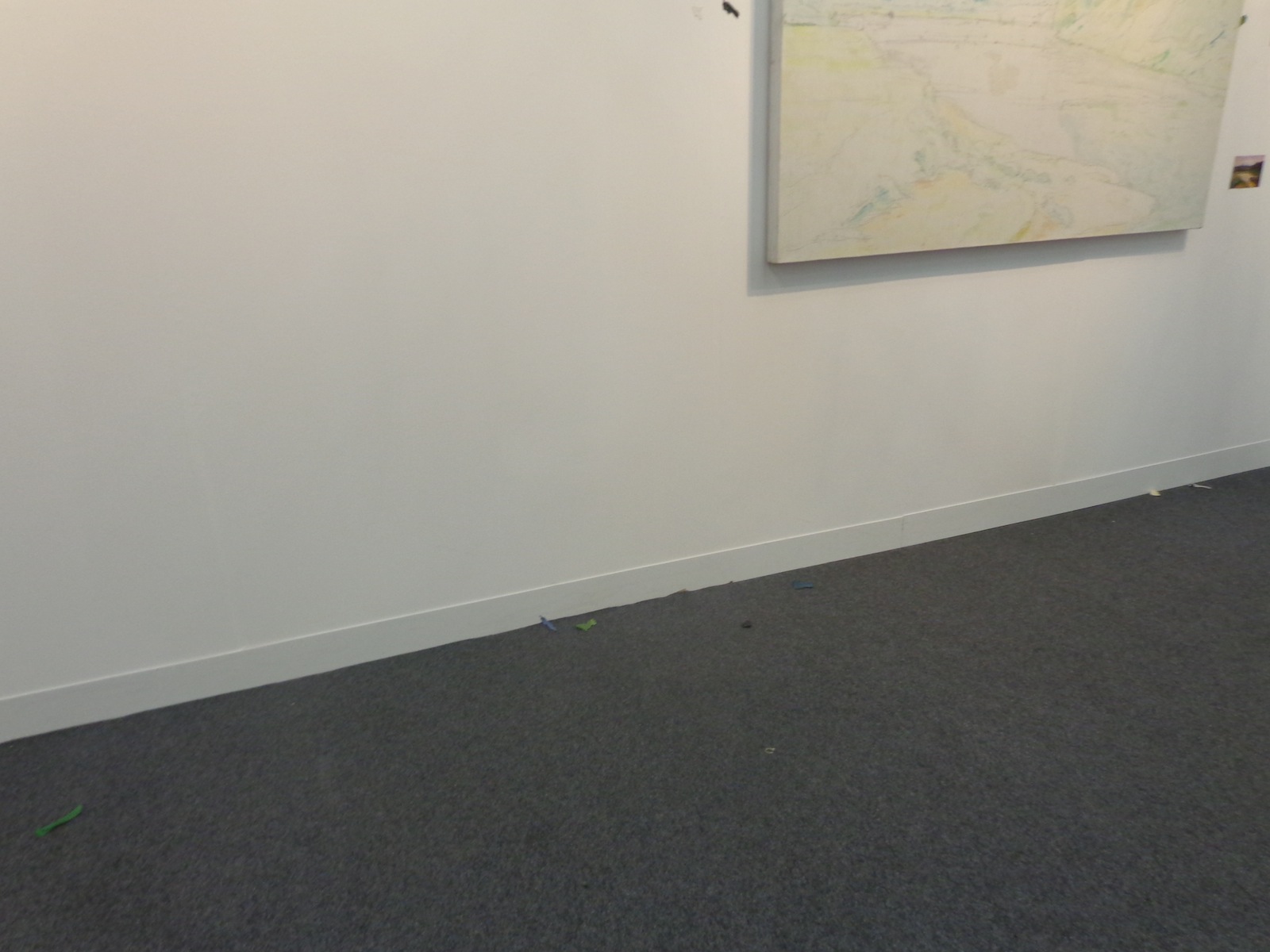
For more of Wang Yuyang’s work, see his bio pages from the galleries who represent him, White Rabbit and Boers-Li.
GD Star Rating
loading...























